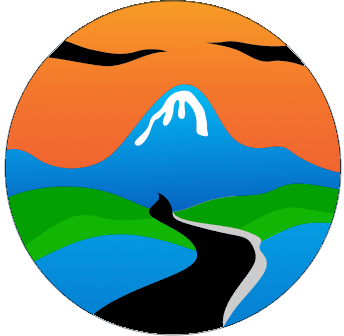Visit Angle Inlet
I knew it was going to be a long haul—over four hours to reach the Angle Inlet MN. This tiny, remote community sits at the very top of Minnesota, tucked into a geographic oddity called the Northwest Angle. Thanks to an 18th-century mapping error during negotiations between Britain and the United States, the Angle ended up cut off from the rest of the country. It’s the only part of the contiguous U.S. that lies north of the 49th parallel, and to get there by land you have to leave the country—driving through Canada before re-entering the U.S. again.
The drive north took me through a string of small towns, many tucked beside quiet lakes. I was struck by the tiny post office buildings—sometimes next to a volunteer fire company, sometimes near a county building—each one a snapshot of small-town life. Overhead, the sky was in constant motion: clear blue one minute, partly cloudy the next, then a solid gray with just a few bright holes where sunlight spilled through. Off in the distance, a faint haze of smoke lingered. In one town, I stopped for gas and spotted a giant walleye statue across the street, proudly welcoming fishermen to the north.
I later learned that Minnesota is the third-largest producer of sunflowers in the country, behind its neighbors North and South Dakota. I pulled over several times for photos, and there always seemed to be a convenient turnout with a worn path leading to the edge of the fields. Clearly, I’m not the only one who can’t resist stopping for a moment of sunflower worship.
I eventually made it to Warroad the last town before entering Canada. I stopped at Lake of the Woods Coffee. I grabbed a chicken wrap for lunch—fresh, well-prepared, and a bit pricey—and a cup of coffee for the road. North of town, road construction had Google Maps spinning in circles, constantly trying to reroute me back to a closed section. I had to navigate by instinct until my location finally synced with the map.
There are only three ways to reach Angle Inlet: small plane, boat, or the long drive through Manitoba. With a van, the choice was obvious. I eventually reached the Canadian border, where two officers came out to meet me. The tone was serious from the start. After the standard questions, I was directed to pull into inspection spot #2. Fifteen minutes later, they asked me to step out while they searched the van for weapons, drugs, cash, people, or pornography. I waited in their office while they went through my things. In the end, they found nothing, but the delay cost me another hour.
Once through Canada, it was another hour to my Harvest Host stop—Prothero’s Post Resort. The farther north I went, the rougher the road became. The last 20 miles were dirt, so I softened my suspension to tame the vibration. Locals in pickups flew past at 60 mph; I kept it steady at 45.
Crossing back into the U.S. was unlike any border I’d seen—no guard station, no fence. Instead, signs pointed to Jim’s Corner, a lonely crossroads with a glass booth containing a tablet. You check in with U.S. Customs there, answering a short list of questions before getting the “accepted” message. I actually drove past it without realizing, but Kelly, who greeted me at Prothero’s, assured me the resort had the same setup. She tapped a display in the back room and said, just follow the instructions. I asked if it had me me on video and she said “It has only ever happen once to her when she came in a 2 am after a long trip.”
I’d originally been offered a shaded spot by the cabins, but asked about something more open. I was under trees and lost StarLink reception completely. Kelly moved me to a spot near the marina, where the lake views stretched wide in front of me. She mentioned they’d be roasting marshmallows by the fire at 7:30 and invited me to join everyone.
Around 5 p.m., a strong northwest wind rolled in, bringing very heavy rain for an hour and a half before the sun broke through. The golden light on the wet docks and dark clouds was stunning. While I was photographing, a drenched couple from Kentucky motored in from a walleye fishing trip, their small boat sloshing with six inches of water. I helped pull them to the dock, and they told me they’d battled six-foot waves and weren’t sure they’d make it back without capsizing.
Later, one of the fishermen, John Beck—who owns a construction company with his brothers—struck up a conversation. We talked business, politics, and how fractured the country feels. He didn’t agree with everything Trump had done, especially on Ukraine, but credited him on the economy. We both agreed the political system is broken, and I recommended The Politics Industry, a book co-written by a Democrat and a Republican.
As the sun dipped, the rain returned, and the marshmallow roast was called off. The lake went quiet again, the docks slick and glistening under the last light, and Angle Inlet settled into the kind of stillness that only exists at the far edge of the map.





















